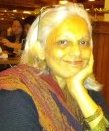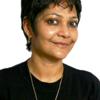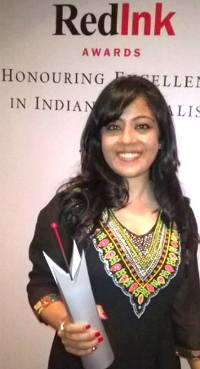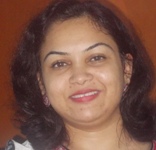Ever since I first travelled to the Middle East region, in 2006 I was fascinated with the intricate lattice work in the local architecture even in the mundane concrete covers for the airconditioners! So much like the ‘jaali’ work that we see in the Taj Mahal and other grand Moghul monuments and other structures in Rajasthan. Maybe it has something to do with balancing light and shade and allowing for ventilation in hot climates. I found a treasure trove of artefacts and exhibits at the Museum of Islamic Art here in Doha in 2011 that represented some of the best of what is known as Islamic Art – a combination of the 3 pillars of geometry, calligraphy and arabesque or Islimi (floral and foliate forms).
I got lucky when I chanced upon a workshop being offered at Katarain December last year, in collaboration with the Prince's School of Traditional Arts, London, and spent two magical weeks learning 'geometry' and 'arabesque' motifs. I havent really done much 'art' work since I left school, apart from a brief dabbling in oils, during one college summer holiday, and doodling of 'rangoli' or 'alpana' patterns (a habit I picked up in college!), but the sessions made it look so do-able. So over that fortnight, to the surprise of my husband and the teachers, I tried to attend as many sessions as possible with Richard Henry and Nooshin Shafiei, the resource persons who had come from the Prince's School of Traditional Arts in London to teach us and ably assisted by woodwork artist Roya Mai Al Souag.
What I found really liberating and extremely gratifying was seeing patterns and motifs unfold almost organically, before our eyes as we grappled with the compass and a ruler, drew circles and lines and picked out patterns. We drew grids with 6 point (Seal of Solomon), 8 point (Khatim) and 12 pointed stars. We learnt about the Breath of the Compassionate, Seeds of Creation and so much more.
The Islimi or Arabesque motif sessions were another amazing experience. We learnt about tea staining our papers and to trace using red earth pigments, and then to draw the Hatayi or lotus patterns - Nooshin with her infectious enthusiasm, taught us how to paint steady straight lines using the really thin brushes and then to 'shade' and colour our hatayis and even gilt them with gold leaf !!!
The high point of my Islimi classes was doing the Shamseh, with its tiny floral motifs. Each petal of these little flowers had to be painted at least thrice in differing shades of the same colour that ranged from light to dark. The process was almost meditative and kind of spiritual! It’s no wonder that the Shamseh is supposed to be a symbol of divinity, light and oneness with God.
It was thus very disappointing to miss the March workshops as I was away in India and I am so grateful to my friend and classmate, Aziza (who does some amazing work herself) as she collected some of the handouts and shared pictures of the work they were doing via Whatsapp.
As luck would have it, soon after I returned to Doha at the end of March, Aziza informed me of a fresh series of Art workshops at the Museum of Islamic Art - another delightful place to just hang around and soak in the sights and exhibits - this time by Roya!
So now two months have gone by in a blur of geometry and believe it or not, 'woodwork' classes!!! The geometry sessions revived the thrill of wielding the compass and ruler and producing an interesting pattern of the 12 pointed star and this time with the 'weave’.
Our instructor Roya Mai, herself an accomplished woodwork artist, took us through our paces in the woodwork sessions, first walking us through the Ferozekoh exhibition at the museum to get a sense of the intricate Nooristan style of woodwork of Afghanistan. We then traced our patterns onto the pine wood blocks, drew 'cut lines' and learnt to wield our 'raqqamas’, a unique Algerian curve bladed chisel, that we used to make our 'cut lines' on the wood, and then carve out the wood to give it depth and see the pattern emerge. Alas the classes were too short and infrequent so we couldn’t finish our pieces.... I am hoping that we will get a chance to go in for a few more sessions and finish what we have started.
I have been fiddling around at home with the patterns and trying to recreate some of the pieces and am acutely aware that there is still so much more to learn.
Find us on facebook: facebook.com/TheThumbPrintMag







































